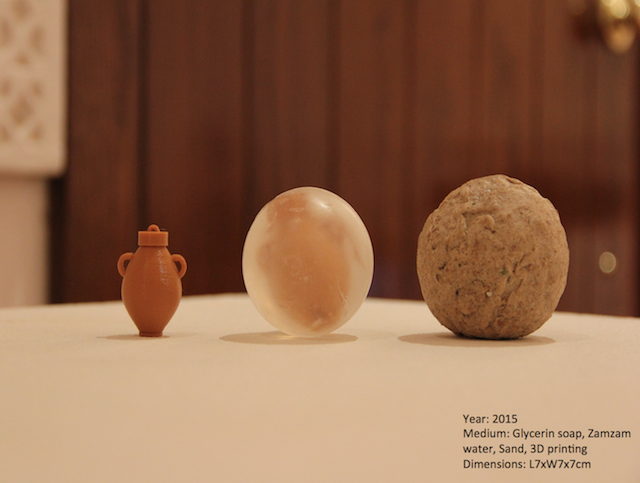Othman Khunji
b. 1983, Manama, Bahrain
Othman M.R Khunji is an interdisciplinary designer from Bahrain, living currently in Qatar. His work ranges between the fields of interior, fashion, interactive product and space design. Othman works as an Interdisciplinary Collaborator and a Media Specialist at Virginia Commonwealth University, from which he has graduated with an MFA degree in Design Studies. His degree resulted in the birth of The Five Pillar Collection and his latest publication: ‘RITUALS, Our Past, Present & Future. Glimpses of Islamic Enrichment.
His work looks into social behaviors within the Gulf region, from an Islamic prospective, where the language of design can encourage and engage a religious re-experience. These interactive experiences invite a re-imagination of ritual. The interactivity of contemporary life is expressed in his work to invite an exploration of faith.
Preview to Interview with Othman
MEA: What was one of your first projects?
Othman: My first series was “The Five Pillars of Islam,” which I started from one of my courses at VCUQin 2014. The Five Pillars in Islam are the five mandatory acts in the Islamic faith required by all Muslims. These include: the Shahada Testimony, salat prayer, zakat or almsgiving, sawm fasting during Ramadan and completing the journey of Hajj to Mecca.
MEA: Can you explain the physical and conceptual components of the "Prayary" piece?
Othman: The Prayary was designed to embed the value and beauty of the connection with Allah, Salat, prayer, and in order to sustain this connection even after a person is done praying. For the piece I created a mechanical contemporary praying mat that physically allows you to interact with the piece, allowing a different way to practice Islam and inviting both children and adults to try it. When you would perform ‘Sujood,’ and touch your forehead to the praying mat, this triggers the mechanism to create a custom-made rosary.
MEA: How did you create the piece?
Othman: I experimented with building the frame in a woodshop, printing the mechanism via the 3D printer, UV printing the Quranic verses or poetry, and laser cutting the shape of the rosary bead’s material.
MEA: I’m sure many of your Muslim participants loved that!
Othman: Of course, I remember talking to one woman at the exhibition and she said ‘this is like a record of your devotion. You’ve got it in your hand.’ This is exactly what I was trying to let people do, create the prayer beads out of their own efforts and time.
MEA: What was a major goal for you with this project?
Othman: I wanted to see the people really engage with my works. I saw everyone spoke a different language, both Arabic and English along with cross cultural and generational differences. The aim of the works focused on how to get everyone, not just youngsters, to want to practice the religion, and not feel as if it’s compulsory. As one says in Arabic, Religion is to ease and not complicate.


















